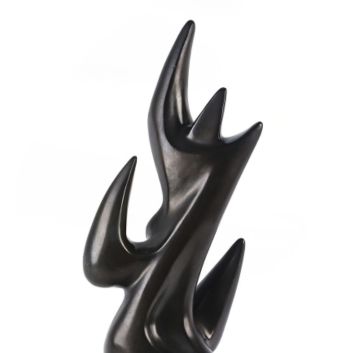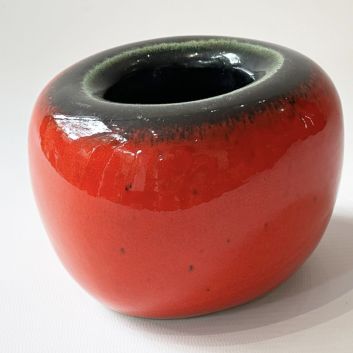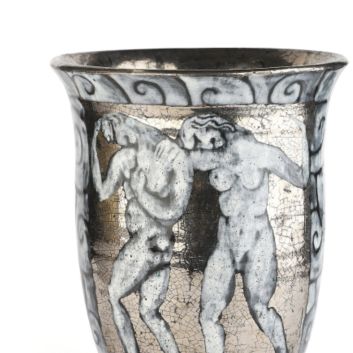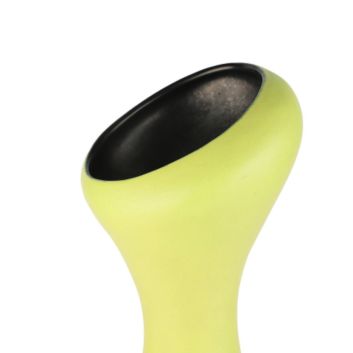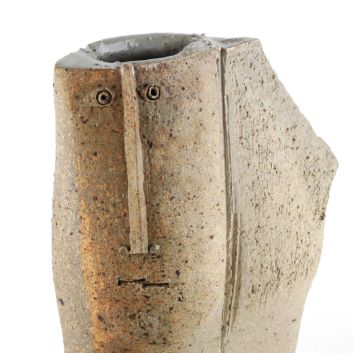Rating and value of works, ceramics, paintings by Jacques Pouchain
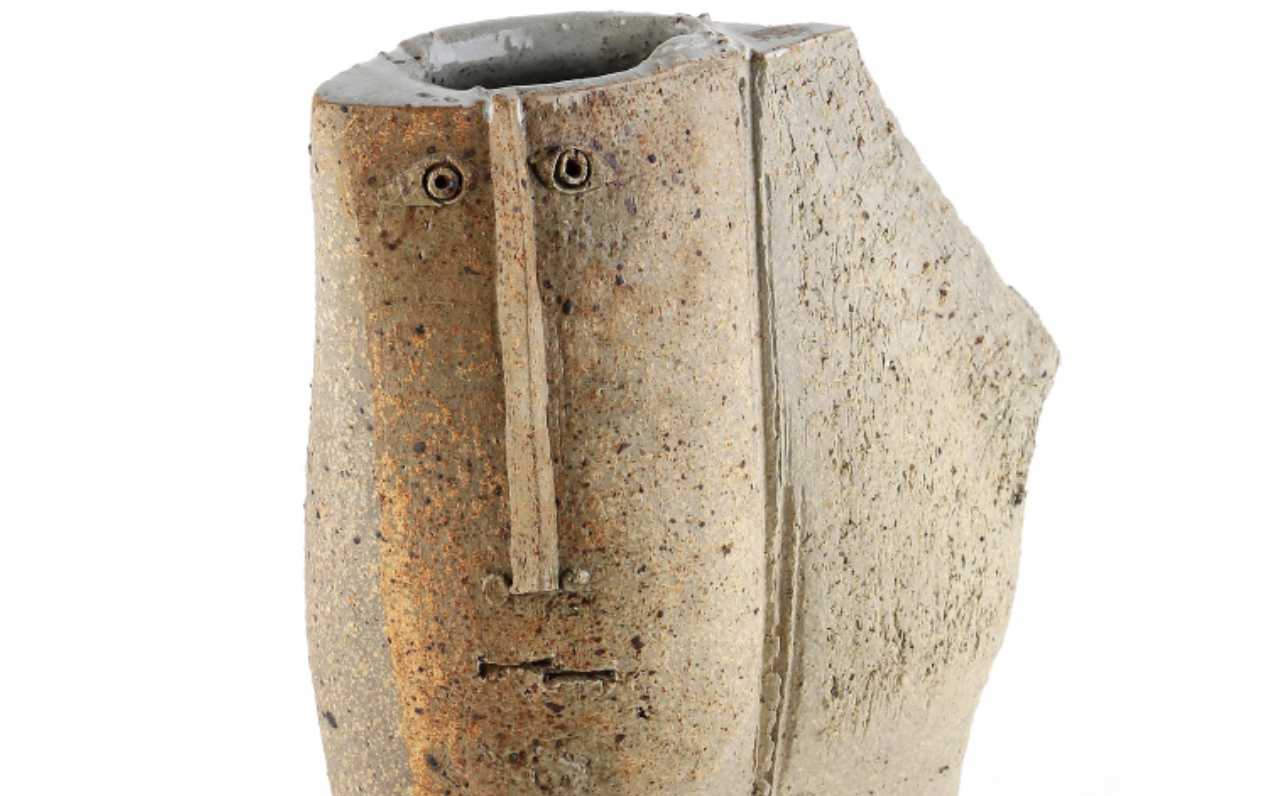
If you own an object by or after Jacques Pouchain, and would like to know its value, our state-approved experts and auctioneers will be happy to offer you their appraisal services.
Our specialists will carry out a free appraisal of your work, and provide you with a precise estimate of its current market value.
Then, if you want to sell your work, we'll point you in the right direction to get the best possible price for it.
Rating and value of works by Jacques Pouchain
Jacques Pouchain is a French artist well known to collectors of ceramics and sculpture.
If you own one of his works, it may be worth more than you think. On the art market, Pouchain's works can fetch very high prices under the auctioneer's hammer.
His ceramic works are particularly prized by French and European buyers, and the price at which they sell on the art market ranges from €70 to €2,200, a fairly substantial range, but one that says a lot about the value that can be attributed to Pouchain's work.
In 2013, a ceramic wall lamp sold for €4,200, whereas its estimate was between €3,000 and €4,000.
Order of value from a simple work to the most prestigious
Technique used | Results |
|---|---|
Ceramics | From €280 to €3,200 |
Luminaire | From €50 to €4,200 |
Sculpture - volume (excluding ceramics) | From €150 to €6,400 |
Response in less than 24h
Style and technique of artist Jacques Pouchain
Jacques Pouchain, ceramist and painter, has established himself as a leading figure in French ceramics, his work bearing witness to a constant quest for purity and simplicity.
His style, deeply marked by a quest for balance between geometric and organic forms, reflects a refined approach to materials, where every curve and angle seems carefully weighed.
Working in clay with impeccable technique, he favors raw surfaces, letting the texture of the clay express itself freely, without artifice or decorative overload.
Influenced by cubism and modernism, Pouchain manages to simplify the lines of his creations, sometimes reaching a degree of minimalist abstraction that echoes a profound reflection on form itself.
The sober glazes he sparingly applies enrich his pieces with a subtle patina, playing on a limited palette of natural tones - ochres, greys, browns - that reinforce the authentic yet timeless character of his works.
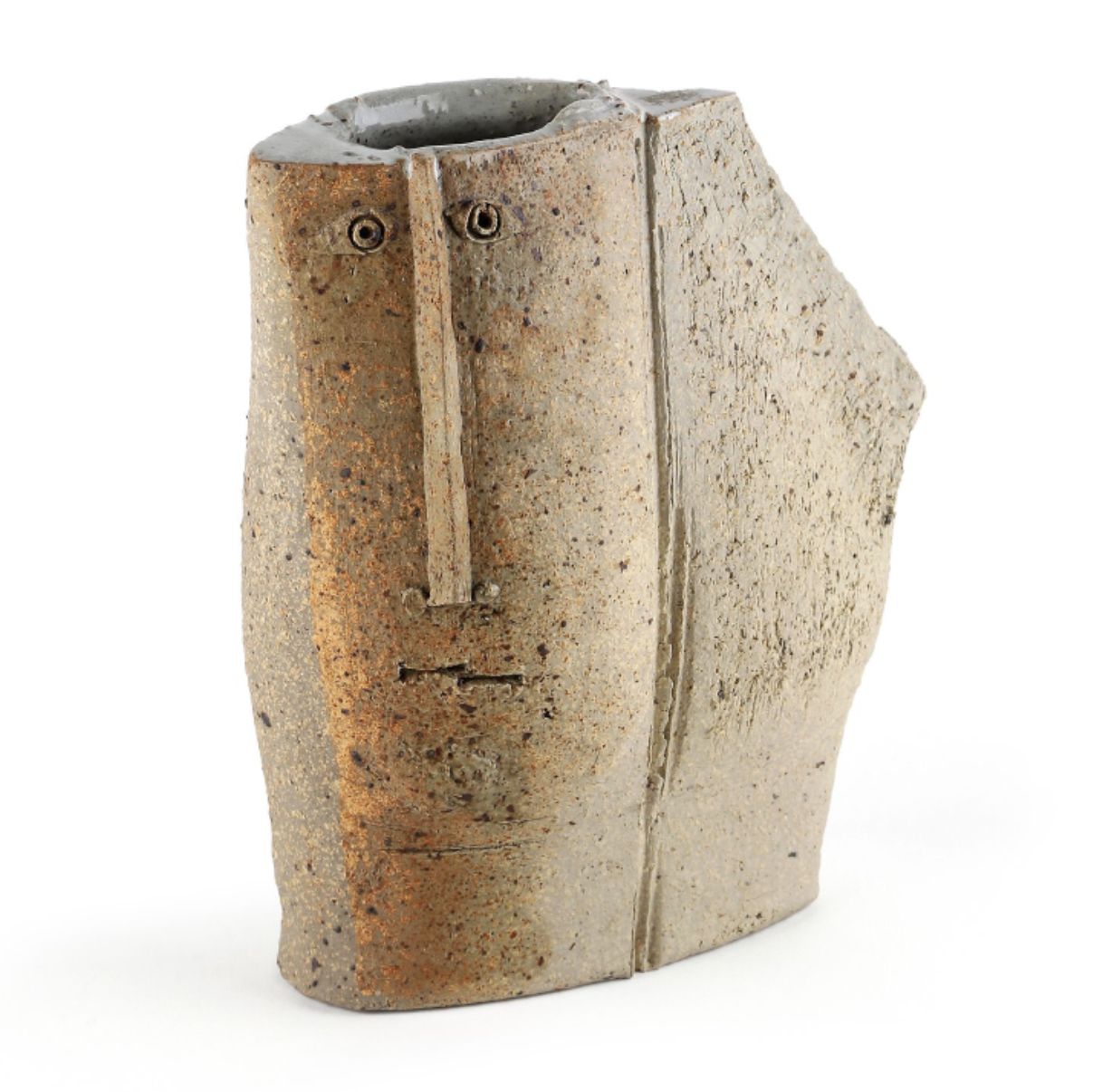
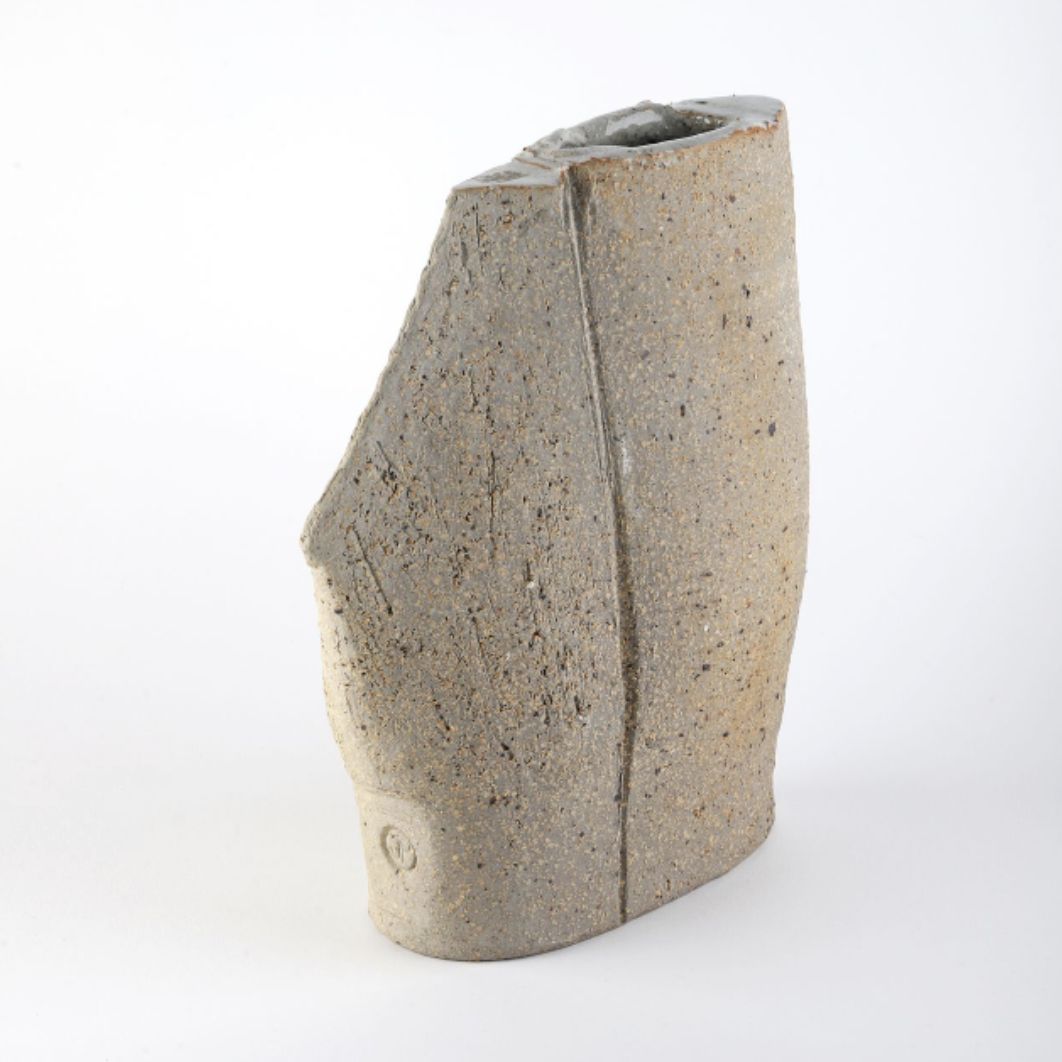
The life of Jacques Pouchain
Born in Paris on June 17, 1927, Jacques Pouchain's career was marked by a multi-faceted artistic quest, oscillating between painting, sculpture and ceramics, for which he became particularly renowned.
After studying architecture in Paris and a spell at the Académie de la Grande-Chaumière, he turned to abstract art, leaving the capital in 1951 to settle in the south of the Drôme.
From 1951 to 1957, he was in charge of the decoration-modeling workshop at the Coursange earthenware factory in Le Poët-Laval, where he introduced new shapes and colors while perfecting his ceramic art.
In 1959, he set up his own workshop in Dieulefit, where he installed a kiln and showroom, and developed a rich production ranging from utilitarian pottery to art ceramics, without ceasing to paint abstract canvases.
His work, marked by the use of white enamel combined with manganese oxide, has won him international recognition.
In the 1990s, as Dieulefit's first deputy in charge of culture, he and Serge Emiliani founded the Maison de la Terre, which in 1997 became the Maison de la Céramique, a recognized training center.
A regular at major exhibitions, he took part in the International Exhibition of Contemporary Ceramics at the Musée Cantini in Marseille in 1965 and the Vallauris Biennial in 1968.
His work has been exhibited in numerous museums and galleries, and can now be found in prestigious collections such as the Musée d'Art Moderne in Paris, the Valencia Museum and Boston University.
Jacques Pouchain died on June 26, 2015 in Valence, leaving behind a rich artistic legacy, celebrated by a retrospective in 2018 at Le Poët-Laval.
Exhibition of Pouchain's paintings
Jacques Pouchain on the auction market
Jacques Pouchain's artistic legacy is fully affirmed in the field of ceramics, where his name is associated with a singular and refined vision.
His creations, marked by a quest for simplicity and harmony, are increasingly popular at auction, where they are prized as much for their aesthetic appeal as for their rarity.
From the 1960s onwards, his works became essential pieces, reflecting the evolution of French ceramic art.
Market success is testimony to the growing interest in his creations, from utilitarian ceramics decorated with stylized motifs to rarer sculptural pieces inspired by themes such as femininity and fertility.
With each auction, the demand from collectors is confirmed, valuing productions signed with his initials, his stylized horseman or the letters "PL" for Poët-Laval.
Recent auctions show continuing interest in his works, with some achieving significant prices, particularly at sales to private collections or retrospective exhibitions, where his contribution to art ceramics is fully recognized.
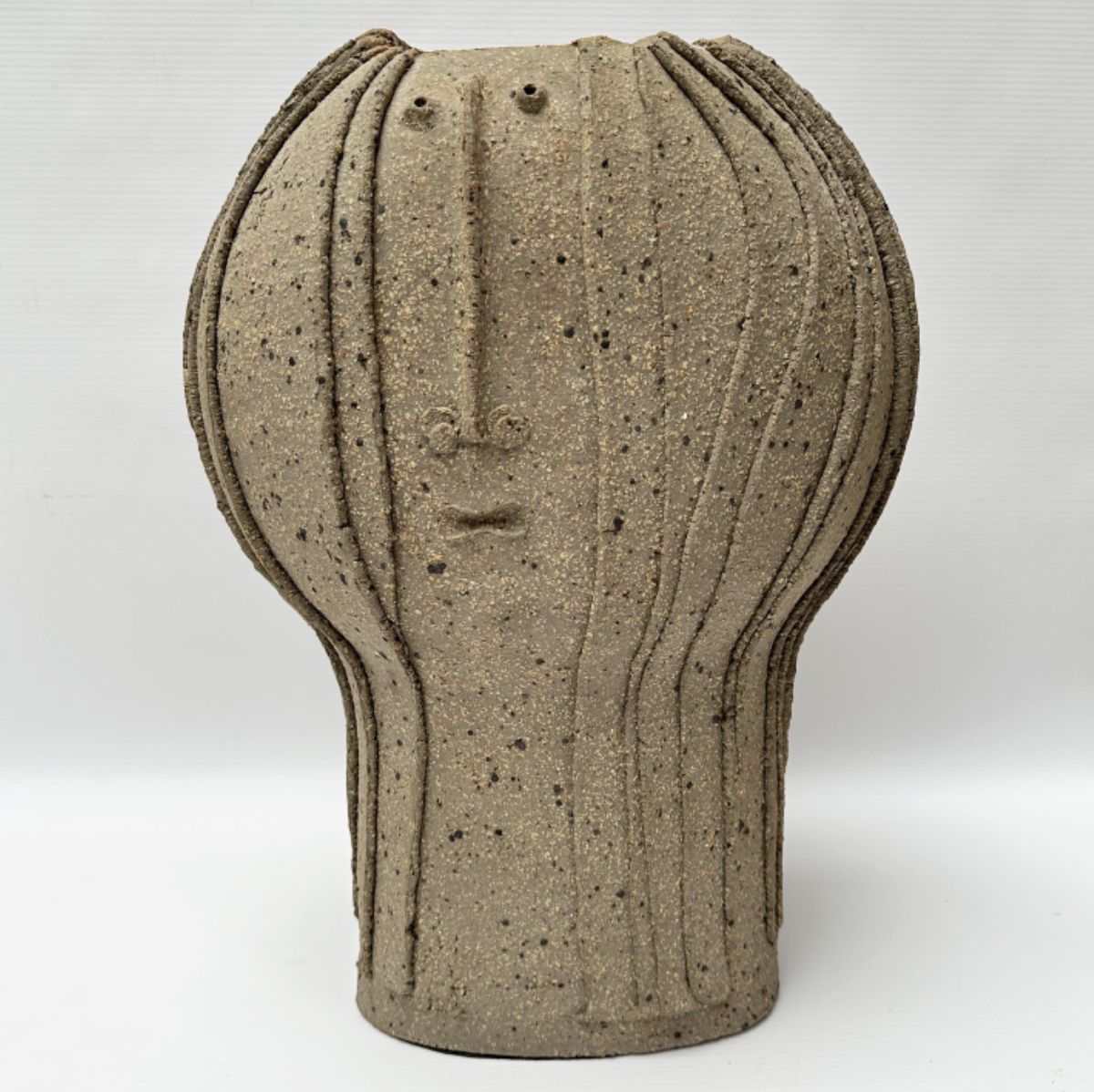
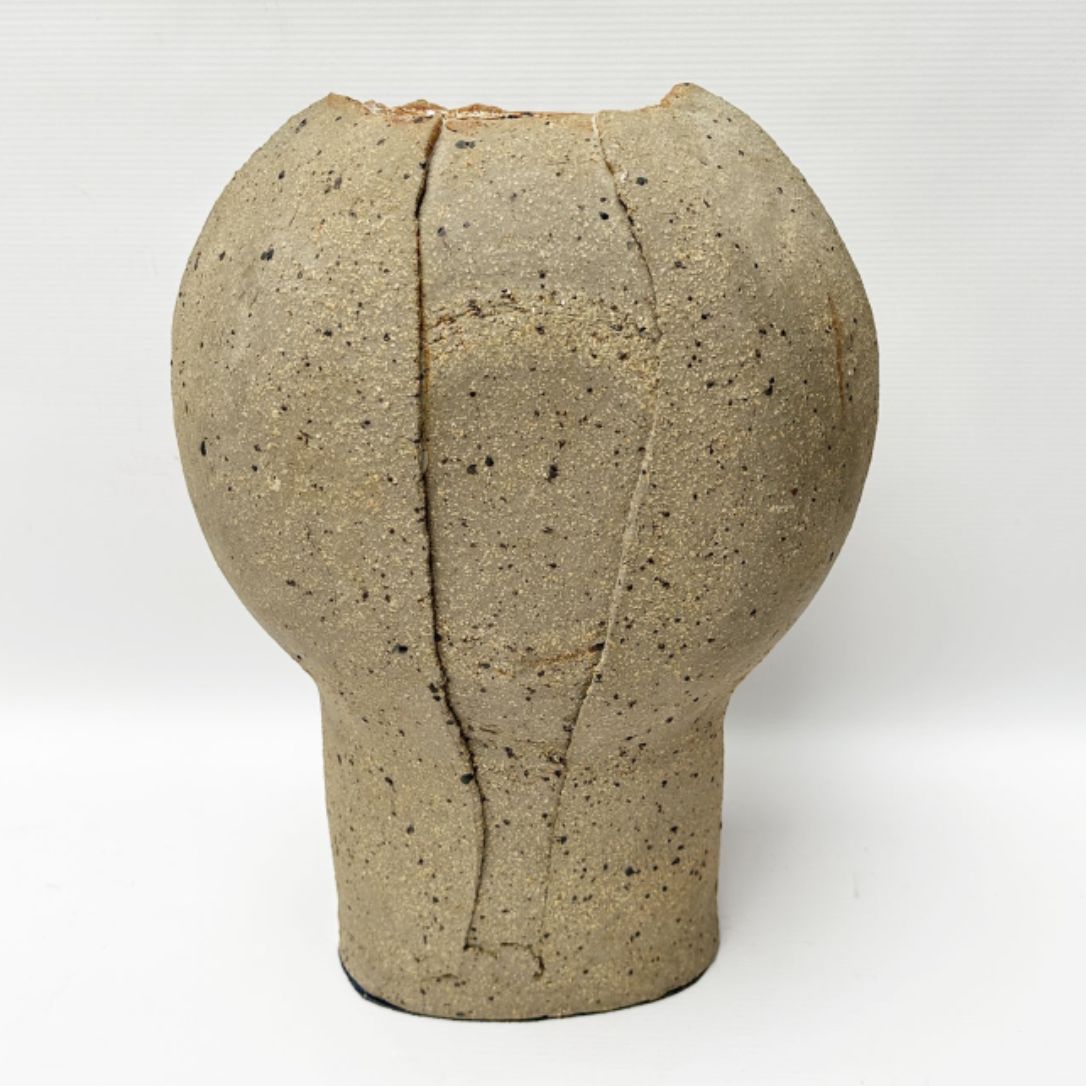
Focus on a stoneware vase with stylized handle, Jacques Pouchain, 1960
This work by Jacques Pouchain, emblematic of his characteristic style, evokes an intimate dialogue between raw form and figurative abstraction.
The apparent simplicity of the face, sculpted in an earthy material, testifies to the artist's attachment to the primitive essence of ceramics.
The textured surface, rough to the touch, blends with the rigid verticality of the piece, recalling both ancient traditions and modernist innovations in ceramics.
Looking at this figure, one can't help but think of the influence of Isamu Noguchi, another great sculptor of the period, whose works also explore the balance between the organic and the geometric.
As with Noguchi, Pouchain seems to draw on a purified aesthetic, where every detail, however minute, becomes an essential component of the piece. This enigmatic face, with its features reduced to essentials, recalls totemic figures and ancestral masks.
It is part of an artistic approach that seeks to reconnect with timeless, universal forms.
Throughout his career, Pouchain has handled clay with particular sensitivity, developing personal techniques that bring out the raw beauty of the material. Here, the use of enamel is subtle, almost discreet.
The artist favors earthy tones, ochre and gray, to let the material express itself fully. This treatment of surfaces reflects the influence of Pouchain's contemporary Japanese ceramists, notably Shoji Hamada, a master of the mingei movement, which valued simple, functional craftsmanship charged with symbolism.
This sculpture is also distinguished by an absence of superfluous decoration, favoring a minimalist approach. Like ceramists such as Pol Chambost or Georges JouvePouchain concentrates on the essential: form and texture.
Chambost's ceramics, in particular, are renowned for their slender forms and textured surfaces, playing with pure lines and reduced volumes, an influence that can be seen in the present piece, although Pouchain has appropriated this language to infuse it with a more narrative, almost human dimension.
Pouchain's work is part of a tradition in which ceramic art becomes a sculptural medium in its own right, going beyond its utilitarian function to reach a more conceptual dimension.
Despite its abstraction, this face seems to call out to us, evoking a certain introspection. In this, it echoes the work of contemporaries such as Jean Derval, who, while working boldly with clay, retained a particular sensitivity for the human figure.
Moreover, the choice of fragmented form, as if the face were emerging from the earth itself, reflects a reflection on the art of ceramics as a practice rooted in the earth, both literally and symbolically.
Pouchain has often declared his desire to create works that are popular and accessible, and this simple yet powerful face seems to embody this desire to reach a wide audience through simplicity of message and depth of form.
It is also interesting to note the influence that artists such as Pablo Picasso had on Pouchain's generation.
Picassoalthough universally recognized for his painting and sculpture, also ventured into the field of ceramics, exploring new expressive forms through this medium.
Cubist experimentation, which breaks down and recomposes forms, can be seen here in Pouchain's fragmentary, stylized approach, which seems to deconstruct the human face to offer a more primal interpretation.
Finally, the presence of a face, a central figure in many works by 20th-century ceramists, places Pouchain in direct dialogue with his era's questioning of identity, representation and material.
Through this work, we see Pouchain's constant quest to marry the decorative function of ceramics with a broader symbolic scope, creating pieces that transcend their nature to become objects of reflection, interaction and emotion.
In conclusion, this piece by Jacques Pouchain, with its enigmatic face and austere form, bears witness to an artist in full command of his art, combining technique and artistic reflection.
Part of a modernist tradition and inspired by a variety of influences, both European and Asian, she makes a significant contribution to the field of art ceramics, where earthenware becomes the vehicle for profound, universal human expression.
Recognizing Jacques Pouchain's signature
Not all objects produced by Jacques Pouchain are signed, or may be signed differently depending on the period. What's more, there are many copies, which is why it's important to appraise your work.

Knowing the value of a work
If you happen to own a work by or after Jacques Pouchain, don't hesitate to ask for a free estimate using our form on our website.
A member of our team of experts and certified auctioneers will contact you promptly to provide you with an estimate of the market value of your work, as well as any relevant information about it.
If you're thinking of selling your work of art, our specialists will also be on hand to help you find alternatives for selling it at the best possible price, taking market trends into account.
Response in less than 24h
Related topics
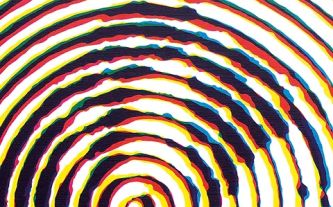
Rating and value of works, silkscreens, paintings by Alain...
Alain Jacquet is a Figuration Nouvelle artist who introduced Pop Art. His works are quoted and successful at auction.
Read more >
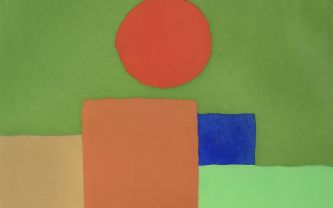
Cote et valeur des tableaux, dessins, peintures de Etel Adna...
Etel Adnan est une artiste libanaise abstraite du XXème siècle, qui a produit de nombreuses oeuvres dont la cote et la valeur sont élevées.
Read more >

Cote et valeur des tableaux, dessins, peintures de Lois Mail...
Lois Mailou Jones est une artiste afro-américaine qui a produit de nombreuses oeuvres dont la cote et la valeur sont élevées aux enchères.
Read more >
Secure site, anonymity preserved
State-approved auctioneer and expert
Free, certified estimates
